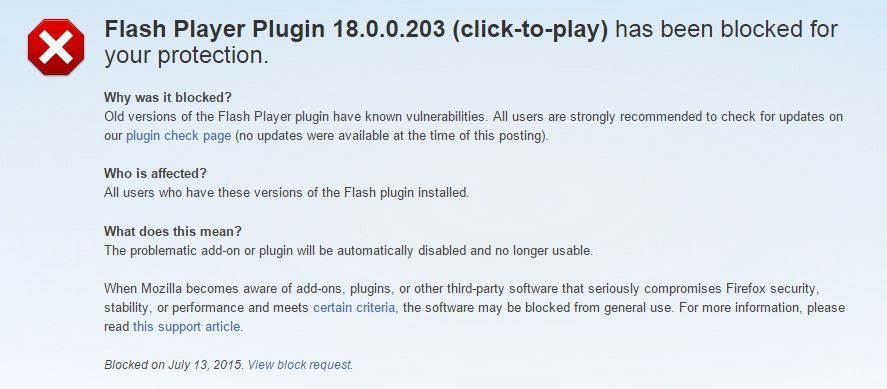Flash had its golden period, but the constant security holes have made it a sieve for malicious software that’s threatening it with imminent extinction. This week alone has seen the discovery of three zero-day vulnerabilities that remain unresolved in the latest updates to the plugin. For that reason Firefox has opted to deactivate it on its browser, and perhaps you should do the same on the one you use every day. Here we explain how to do it.
The HTML5 standard is the latest blow to definitively sink a standard that by all accounts appears unnecessary these days. In fact, Android doesn’t require it, and there are few sites where you need to have Flash installed to browse properly. Thus the big cheeses at Firefox have announced that the end of Flash is imminent, and for that reason have blocked it by default on all versions of the browser.

If you have Chrome you can do the same thing by typing chrome://plugins/ into your URL bar and click the Disable button in the Adobe Flash Player section. Next, to complete your computer’s health check, you can fully uninstall the player using Windows’ Uninstall program tool or programs that do the same thing like the inveterate CCleaner. Not even the latest version of Flash Player (18 and its successive patches) are free of problems, so we’ll have to keep waiting for Adobe to update it.
https://twitter.com/MarkSchmidty/status/620783674561327104












[…] which has in turn prompted the spread of HTML around the Internet. Flash has even been nixxed by software giants like Mozilla Firefox. These days Flash is now completely dispensable, which is why we’re offering a little guidance […]
you knockout my video playback without and alternative you suck…